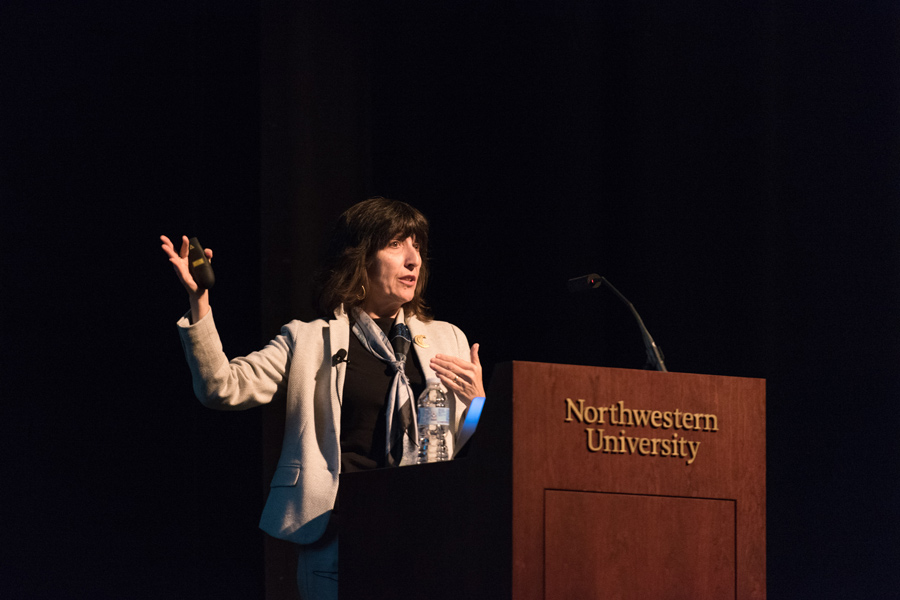University of Chicago professor discusses her work on world’s largest telescope
Jeffrey Wang/Daily Senior Staffer
University of Chicago Prof. Wendy Freedman speaks about the Giant Magellan Telescope in Cahn Auditorium on Thursday. Freedman said the telescope will have 10 times the resolution of the Hubble Space Telescope.
October 6, 2017
The world’s largest telescope is being constructed and will have the highest resolution of any telescope in human history, a University of Chicago professor said.
Wendy Freedman, an astronomy and astrophysics professor at UChicago, spoke Thursday about leading the construction of the Giant Magellan Telescope. About 200 people attended the event in Cahn Auditorium, hosted by the Center for Interdisciplinary Exploration and Research in Astrophysics.
Freedman said Edwin Hubble and his telescope were crucial for understanding the universe. She compared the power of the GMT to the Hubble Space Telescope, saying that the GMT will have 10 times the resolution of the Hubble.
The Hubble was instrumental in solving problems caused by the Earth’s atmosphere, Freedman said. She added that the GMT could continue the Hubble’s work and further advance people’s understanding of space.
“The Hubble Space Telescope has really revolutionized our view of the universe for those of us who started out in this view before Hubble was launched,” she said. “There were things we could not do before the launch of Hubble, essentially because the Earth’s atmosphere is turbulent and the motion of the atmosphere blurs out light that’s coming to us through our telescopes.”
The GMT will also be 20 million times more sensitive than the human eye, Freedman said.
To emphasize the GMT’s improved resolution, Freedman showed photos of what the universe looks like through the Hubble and compared them to images the GMT is expected to produce.
The telescope is being built in the Las Campanas Observatory in Chile, located in the Andes mountain range, Freedman said.
Evanston resident Jignesh Mehta told The Daily after the event he enjoyed hearing about theories of the universe.
“I’ve always been interested in astronomy from a young age, so it’s always a good opportunity to attend talks like this to see what’s the latest developments in the field,” Mehta said.
Mehta added that he was particularly interested in Freedman’s work with the GMT. He said he liked hearing about the project because of Freedman’s knowledge on the subject.
In addition to explaining the GMT, Freedman discussed theories on the expansion of the universe, dark matter and the acceleration of the universe. She said the field of astronomy is still ripe with opportunities for people to explore.
“For those of you young people out in the audience that think that we’ve finished our study of the cosmos, there are lots of unsolved problems, and the dark matter would be worthy of a Nobel Prize,” Freedman said.
Weinberg freshman Ryan Wagner, who also attended the event, told The Daily the telescope’s size is incredibly compelling because it is almost as tall as the Statue of Liberty in his home state of New York.
Wagner said the lecture explored topics that interested him.
“Growing up, I was always fascinated with the stars, black holes,” Wagner said. “So seeing what the future holds, especially with observations with the GMT, it’s very cool to observe all that.”
Email: crystalwall2020@u.northwestern.edu
Twitter: @crysticreme



